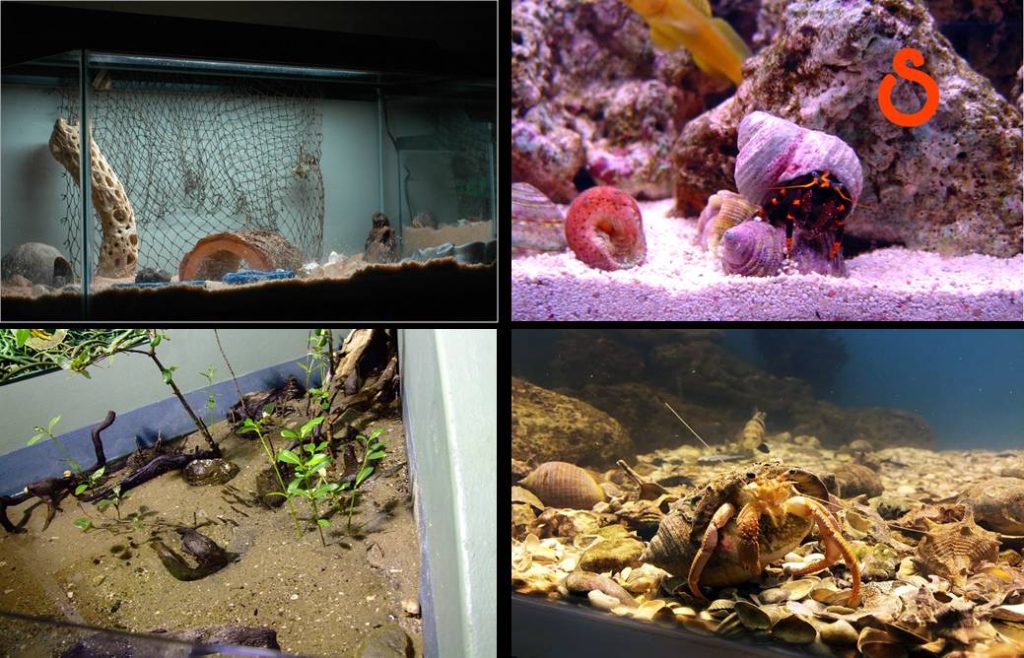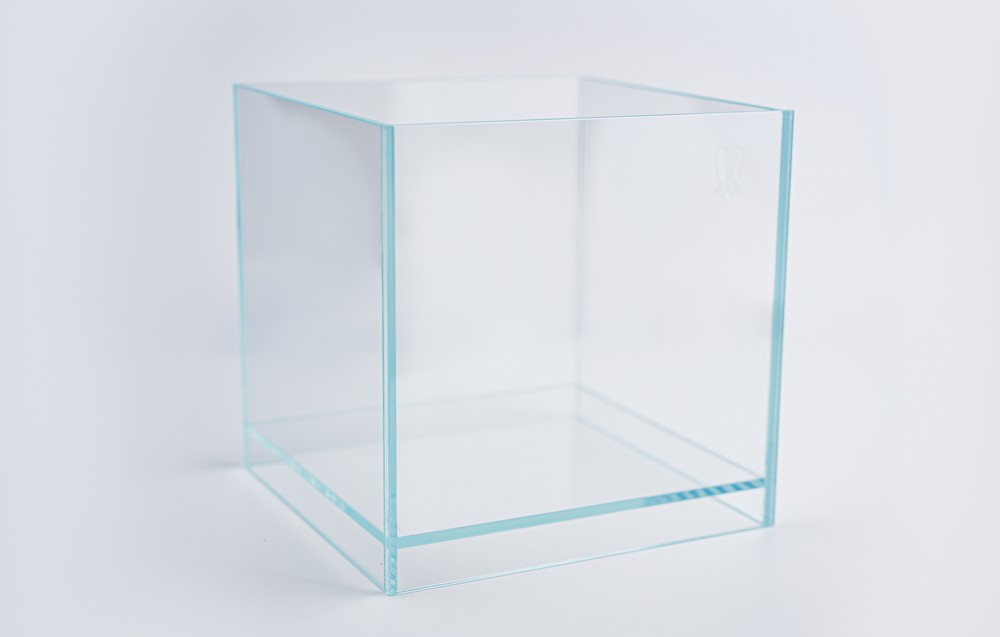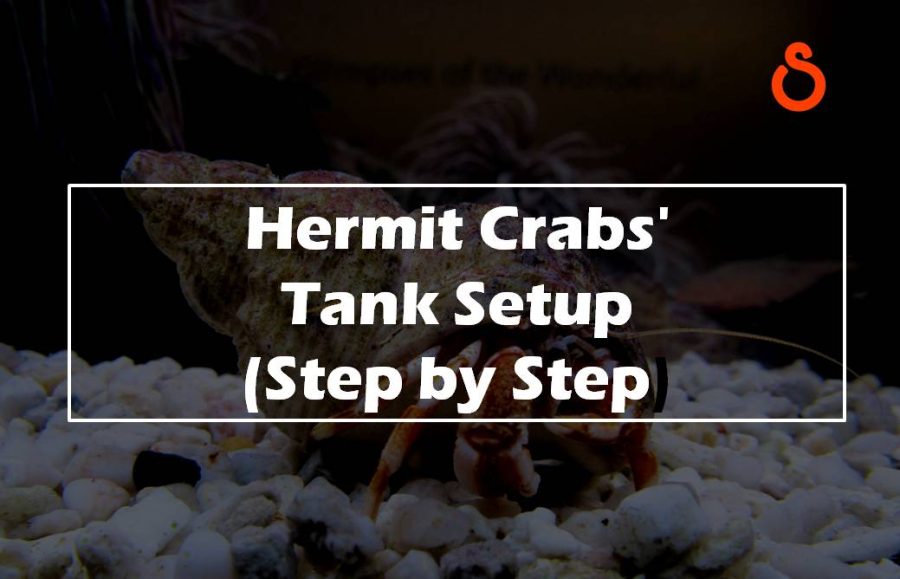Hermit crabs are crustaceans that are used as pets also. These crabs lack shells on their abdominal portion and that’s why they need an extra shell just to keep their abdomen safe. Hermit crabs are awesome creatures and they are either aquatic or terrestrial. If you are thinking to keep a hermit crab as a pet, you need to set up a tank or aquarium, or habitat first. In this article, we will know how to set up a tank for the hermit crabs. The step-by-step process is given below:-
Key points:
- Building a Glass Tank.
- 10 Gallons of Water for Each Crab.
- Deeper Substrate.
- Playsand and EcoEarth Sand.
- Molting and Burrowing of Crabs.
- Salinity level around 1.023-1.026.
- 3-4 extra shells.
- Branches and logs for climbing.
- Live plants.
- Filters remove toxic gases.
- Optimum temperature 75-85 degrees Fahrenheit (24-29°C)
- Optimum humidity 60-80%.
- Crabs need 12 hours of light and 12 hours of dark.

Step – 1: Building a Glass Tank

When you are thinking to keep a hermit crab as a pet, you need to have a glass tank. You can also use a plastic tank. Glass tanks are better as they look very clear than plastic tanks. Choose the tank size according to the number of hermit crabs you want to keep. Normally one or a pair of aquatic hermit crabs need at least 10 gallons of water and 20 gallons will be comfortable for them. Everyone loves his pet and he wants no suffocation to his pets. So, give at least 10 gallons of water to each hermit crab. That means if you have one hermit crab, give it 10 gallons of water, for two crabs give it 20 gallons, for three crabs give it 30 gallons, and so on. Give the same space to your land or terrestrial crabs. Hermit crabs will live longer if you can provide them with a better environment.
You can buy the glass tanks from a store or you can also build it DIY. If you want to build the glass tank on your own, firstly measure the glass sizes, buy the glasses from a local store, buy silicon glue, and watch a youtube video on how to build a glass tank DIY.
You can also use a plastic tank but I will not recommend it as it doesn’t look gorgeous.
Step – 2: Putting Sand or Substrate in The Tank
Hermit crabs need substrate or sand because of their burrowing behavior. All the sands found in the market are not perfect for the crabs. Use play sand and eco earth sand. Also, the sand should be saltwater friendly. The sand or substrate should be at least 4 inches deep. Note that 4 inches is the minimum depth for the tiny crabs. If you have a bigger one, the depth should be increased. For larger crabs, the depth can be 6-8 inches and even more. The substrate must be at least 3 times deeper than the size of the crab. Some bad substrates, which are not recommended to use are calci sands, gravels, etc.
Hermit crabs burrow when they are in the molting period. They burrow into the sand and pass the whole molting period into the sand. This is their normal behavior. They also burrow when they are out of shells. They burrow to cool off or keep their body warm.
Before using the sand as substrate, you should sterilize them so that any microbes can not attack your favorite pet. You can rinse the sand well to make them dust free. You can also heat and bake the sand to fully kill all the microbes present in it.
Step – 3: Saltwater Preparation and Salinity Control
Except for a very few species, all the aquatic hermit crabs are marine. So if you want to keep an aquatic hermit crab, you need to have proper knowledge of saltwater preparation. You must prepare the saltwater perfect for the crabs otherwise the crabs won’t survive. Aquatic crabs live in the water and they never come to the land.
If you are keeping a land hermit crab, you have to provide them with a bowl of saltwater in the tank. Land hermit crabs also need water. They will die if you do not provide them the water. The bowl should be placed perfectly so that the crabs crawl in the water and swim there. Also, the bowl should be deep enough so that the crab can fully submerge inside the water.
Prepare the salt water mix by following the instructions provided on a marine salt mix package. Use a hydrometer or refractometer to measure the salinity of the water. Saltwater hermit crabs require a specific salinity level, typically around 1.023-1.026 specific gravity. Monitor the salinity levels regularly using a hydrometer or refractometer and make adjustments as needed.
Step – 4: Putting Extra Shells
Hermit crabs are crustaceans that do not have a hard exoskeleton on their abdominal region. That’s why they occupy other animals’ shells especially snail shells just to keep their abdomen safe. Though you are keeping these crabs as a pet and no predator will attack them, this is their behavior to live inside a shell. They even fight for their shells. They also attack other hermit crabs to occupy their shells.
You need to put 3-4 extra snail shells or customized artificial shells per one crab. Sometimes crabs change their shells just to explore. Extra shells must be needed in a healthy crabitat. Never use the painted shells because the dye of the paint is poisonous to the crabs.
Step – 5: Branches and Logs
The aquarium of the hermit crab needs a lot of branches and logs so that the crabs can play, hide and explore. As the crabs are nocturnal animals, they usually take rest during the day time. They take rest behind these branches and logs. Dark corners, coconut huts, and hanging coco-hideaways make great spots for hermit crabs to hide in.
Hermit crabs can climb and they love climbing. In the wild, especially the land crabs usually climb into the trees and hide inside the holes of the trees. They spend lots of time in trees and bushes, and they love exploring. Driftwood, ladders, bridges, and climbing branches are all great elements to add to crabitats. Besides if you put natural branches and logs, it will be like their natural habitat and they will enjoy their natural habitat.
Step – 6: Putting Plants
Live plants increase the beauty of the tank. You can add some aquatic plants to the aquatic crabitat. Remember crabs can eat them but that doesn’t matter because the crabs will be happy and they will get a natural habitat. Before adding some plants you should choose plants that can tolerate specific conditions such as lighting intensity, water temperature, and water quality. You should also ensure that the plants you select are non-toxic to hermit crabs. If you add live plants, you have to add proper lights for them.
You can add Java moss, Anubias, Hygrophila difformis, Marimo Moss Ball, Hornwort, Java Fern, and so on. You can also add live plants to the land crabitat.
Step – 7: Filtration and Circulation
The filtration and circulation system is required in the aquatic crabitat. You will provide food to the crabs, the crabs will eat and then poop. The poop of the crabs will be decomposed and produce toxic gases for the crabs. Besides extra wasted foods will be decomposed also and produce toxic gases. Filtration and circulation system will remove these toxic gases from the tank and will keep the habitat healthy.
Install a saltwater-specific filtration system, such as a protein skimmer and a powerhead or circulation pump. These will help maintain water quality by removing organic waste and promoting water movement and oxygenation.
Step – 8: Maintaining Temperature and Humidity
Hermit crabs are cold-blooded and in the wild, they live in warmer places. The healthy temperature of hermit crabs is between 75-85 degrees Fahrenheit (24-29°C). If the temperature reduces or increases, they burrow into the sand to keep their body temperature stable. The prolonged increased or reduced temperature will cause death to the crabs.
In order to control the temperature of the tank, you need to install a tank heater under the tank on one side. Do not install the heater under the substrate. The heater is a risky device. You need to keep a thermometer to regularly check the temperature.
Hermit crabs prefer 60-80% humidity. This is more important to their health than temperature. The natural habitat is enough humid which helps them to breathe. Less than 60% humidity will cause difficulties in breathing. Saturated natural sponges, humidifiers, and gauges will help to increase the humidity. You should always monitor the humidity.
Step – 9: Lighting
Proper lighting decorates the tank. Besides if you add live plants, adding light is a must. Otherwise, the plants will die soon. Lighting also increases the temperature. The hermit crabs need 12 hours of light and 12 hours of dark. So, keep your crabs in 12 hours of light and 12 hours of dark. When the lights are on, the plants will grow and your tank will look beautiful. And that time the crabs will hide inside their shell or in the branches or logs you gave. When the lights are off, the crabs will come out.
Remember, hermit crabs require specific care and attention to thrive. It’s essential to research the specific species you plan to keep to meet their specific requirements for diet, lighting, and other factors. Regular observation and maintenance will help you provide a healthy and stimulating environment for your saltwater hermit crabs.
Frequently Asked Questions (FAQs)
Ques: What do hermit crabs need in their tank?
Ans: Hermit crabs need in their tank are: sand substrate, extra shells, branches, logs, plants, light, heater, filter, humidifier and most importantly saline water.
Ques: Can I put 2 hermit crabs in a 5 gallon tank?
Ans: The answer is ‘NO’. Well, you can keep if you want but they will not be happy. 10 gallons of water is needed per hermit crab.
Ques: Do hermit crabs need sand or gravel?
Ans: Yes, hermit crabs need sand but not gravel. Playsand and Ecoearth sand is required for the hermit crabs. They dig and burrow in the sand.
Ques: Do hermit crabs need to be wet?
Ans: Yes, hermit crabs need to be wet. They always need water.
Ques: Do hermit crabs need more fresh or salt water?
Ans: As aquatic hermit crabs are the marine maximum, they need salt water. Land hermit crabs live in the coastal region in the wild and they also need salt water if you keep them.
=========== THE END ==========
Read More:

